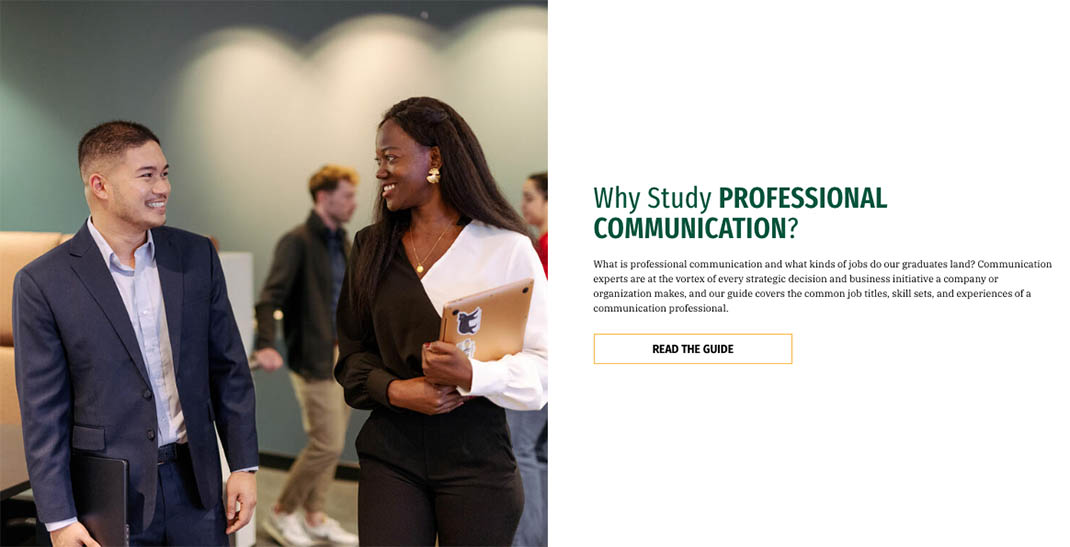AI-Powered Search and the Marketing Website
As generative search becomes more widespread, college websites need to adapt to remain relevant and accessible. Institutions should structure their content in a way that's easily understandable by AI models, using clear language, structured data, and comprehensive answers to common questions. Here's how USF's marketing website is adjusting to Generative Engine Optimization (GEO) for AI-powered search tools.
Users are asking questions and we need to answer them
AI-powered search users are using a more conversational tone. In traditional search, users often typed short, keyword-based queries like "college application deadline." With AI-powered search, users tend to ask full, natural-language questions such as "When is the deadline to apply to college?" This shift reflects a more conversational, intent-driven approach, expecting direct, comprehensive answers rather than a list of links.
How do I optimize my headers for AI?
Turning headers into clear questions supports GEO. This approach helps AI-powered search tools better understand and highlight program-specific content, making it easier for prospective students to find accurate, relevant information through conversational queries.
For example, a header like "Biology Careers" should be changed to something like "What can I do with a degree in biology?"
Not sure what people are asking? Google Search Console can provide some insight by filtering queries by question-like terms like "what", "how", "why", etc.
Example #1

Example #2

Technical optimization matters more than ever
Slow load times, excessive redirects, broken links, and other technical issues can negatively impact AI GEO by making it harder for search engines and AI models to access, understand, and rank your content. These issues reduce site credibility, hinder indexing, and can prevent important information from being surfaced in AI-powered search results, ultimately lowering visibility and user engagement.
Here are a few examples of how we're prioritizing technical optimization:
- Reducing load times
- Reducing URL redirects
- Removing broken links
Web metrics are changing
As overall web traffic declines across the internet due to AI-generated answers reducing direct visits, college websites should shift focus from page views to more meaningful metrics like engagement rate, time on page, and on-page click events. Conversion actions (e.g., request info, apply now) will be the best indicators of how effectively the site meets user needs and supports institutional goals.
How can I help optimize my pages for AI-powered search?
Make sure your pages are accurate and up-to-date
Keeping program content up to date is crucial to ensure prospective students and AI-powered search tools receive accurate, relevant information. Current content builds trust, improves search visibility, and helps avoid confusion caused by outdated courses, requirements, or deadlines.
Create more content
Blog posts, USF News stories, videos, and student stories all help to increase the likelihood your content will appear in AI-powered search results. Think about the questions users ask about your program and how you can answer them and try to use a conversational tone.
Become a subject matter expert
AI-powered search favors authoritative, accurate, and detailed content. Demonstrating deep knowledge helps these pages rank higher in generative search results, making them more likely to be featured as trusted sources when users ask related questions.
Programs might consider putting together a content piece that explains a high-level view of the subject matter. For example, a blog post called "What is Applied Economics?" has a good chance of boosting the authority of the Applied Economics pages among people interested in the field.
Audit your search results regularly
Auditing AI-based search results is essential to ensure accurate, up-to-date, and representative information about your college appears in generative responses. Regular audits help identify misinformation, outdated content, or gaps, allowing institutions to adjust their website content to better align with what AI tools pull and present to users.